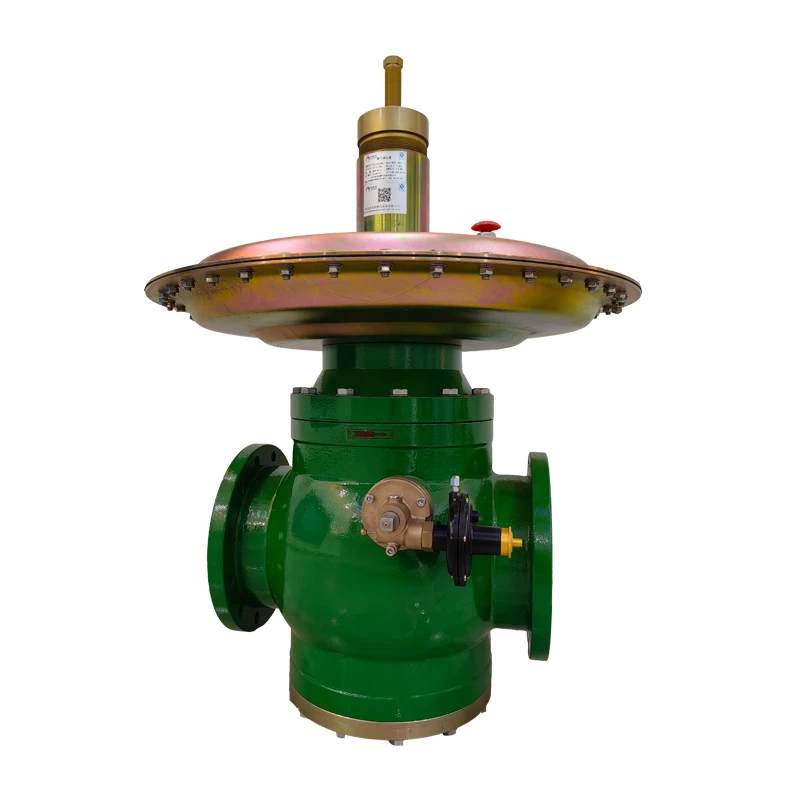
Oct . 13, 2024 20:59
Back to list
natural gas pressure reducing station
The Importance of Natural Gas Pressure Reducing Stations
Natural gas has become a crucial component of the global energy landscape, serving as a primary source for heating, electricity generation, and industrial processes. As the demand for natural gas continues to rise, the infrastructure supporting its distribution becomes increasingly critical. One of the essential components of this infrastructure is the natural gas pressure reducing station (PRS).
A pressure reducing station is designed to regulate the pressure of natural gas as it flows from high-pressure transmission pipelines to lower-pressure distribution networks. High pressure in transmission lines ensures efficient transport over long distances, but this high pressure is not suitable for end-users such as households, commercial establishments, and industries. A PRS acts as a mediator between these two systems, ensuring that gas is delivered at a safe and usable pressure.
The working mechanism of a PRS is relatively straightforward. Incoming natural gas first passes through a filtration system to remove impurities and particulates, which could potentially damage downstream equipment. After filtration, the gas enters the pressure regulation unit, typically equipped with pressure regulators and control valves. These devices are calibrated to reduce the pressure to predetermined levels suitable for distribution.
natural gas pressure reducing station

These stations also play a significant role in maintaining system safety. By employing various safety features, including shut-off valves and monitoring systems, PRS stations can respond to abnormal pressure changes, preventing potential hazards such as explosions or gas leaks. The ability to maintain consistent pressure levels is crucial for both the reliability of gas supply and the safety of the infrastructure.
Moreover, PRS stations often incorporate advanced technology for real-time monitoring and control. Many modern PRS facilities are equipped with sensors and automation systems that allow operators to adjust pressure settings remotely, ensuring efficient management of gas flow based on consumer demand. This integration of technology enhances operational efficiency, reduces the risk of human error, and facilitates rapid responses to emergencies.
The significance of pressure reducing stations extends beyond technical aspects; they are vital for economic and environmental sustainability as well. Efficient pressure regulation directly contributes to energy conservation by minimizing gas losses during distribution. By ensuring that natural gas is delivered at optimal pressure levels, PRS stations help to reduce operational costs for gas companies and ultimately lower energy prices for consumers.
In summary, natural gas pressure reducing stations are integral to the natural gas supply chain. They ensure safe and efficient delivery of gas to end-users while maintaining system reliability and safety. As reliance on natural gas continues to grow, investing in advanced PRS technology will be pivotal in meeting future energy demands sustainably. With the global shift towards cleaner energy sources, the role of pressure reducing stations will likely evolve, supporting the transition to greener energy solutions while maintaining the integrity of the natural gas distribution network.
Latest news
-
Safety Valve Spring-Loaded Design Overpressure ProtectionNewsJul.25,2025
-
Precision Voltage Regulator AC5 Accuracy Grade PerformanceNewsJul.25,2025
-
Natural Gas Pressure Regulating Skid Industrial Pipeline ApplicationsNewsJul.25,2025
-
Natural Gas Filter Stainless Steel Mesh Element DesignNewsJul.25,2025
-
Gas Pressure Regulator Valve Direct-Acting Spring-Loaded DesignNewsJul.25,2025
-
Decompression Equipment Multi-Stage Heat Exchange System DesignNewsJul.25,2025

